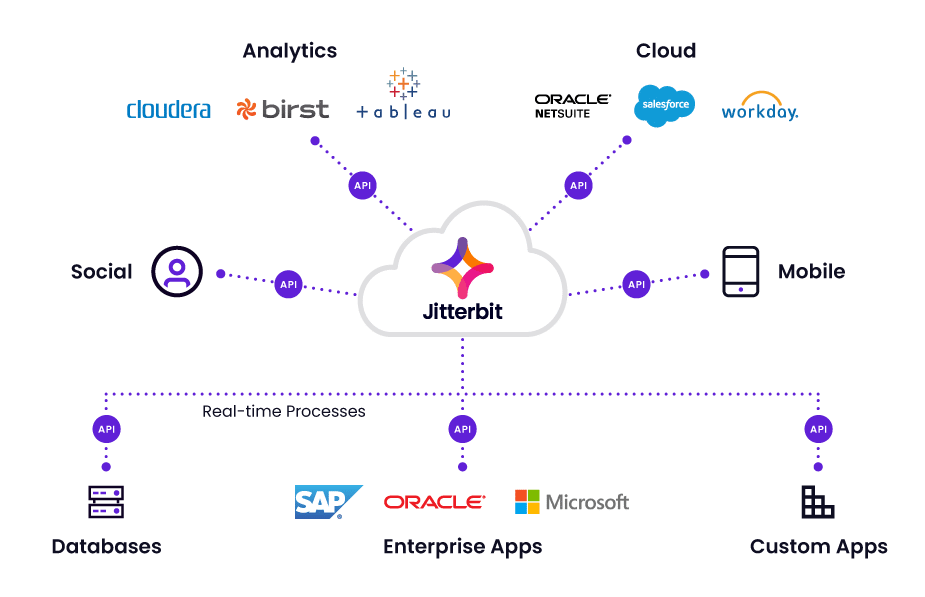In an increasingly interconnected world, businesses are constantly seeking ways to enhance efficiency, improve user experiences, and foster innovation. One of the most effective strategies to achieve these goals is through API integration. APIs, or Application Programming Interfaces, allow different software systems to communicate with each other, enabling seamless data exchange and functionality enhancement. In this article, we will delve into the world of API integration, exploring its significance, benefits, challenges, and best practices to leverage its full potential.
Understanding API Integration
API integration involves connecting different applications or services using APIs to enable them to work together. This integration allows disparate systems to share data and functionalities, streamlining processes and enhancing user experiences. APIs serve as the bridge between different software systems, allowing them to communicate and function as a cohesive unit.
For example, consider a food delivery application. The app needs to communicate with various services, such as payment gateways, mapping services for delivery tracking, and restaurant databases. Through API integration, these systems can work together efficiently, providing a seamless experience for users.
The Importance of API Integration
- Enhancing Connectivity
- In today’s digital landscape, businesses rely on various software tools to manage operations. API integration allows these tools to connect and share information, eliminating silos and enhancing overall connectivity.
- Streamlining Processes
- By automating data exchange between applications, organizations can streamline workflows and reduce manual tasks. This leads to increased productivity and efficiency, allowing teams to focus on more strategic initiatives.
- Fostering Innovation
- APIs empower developers to create innovative solutions by combining different functionalities and data sources. This flexibility allows businesses to adapt quickly to changing market demands and explore new opportunities.
- Improving Customer Experience
- A seamless user experience is crucial for customer satisfaction. API integration enables businesses to offer integrated services, allowing customers to interact with multiple platforms without friction.
Benefits of API Integration
- Cost-Effectiveness
- Developing a new application from scratch can be costly and time-consuming. By leveraging existing APIs, businesses can save on development costs and reduce time-to-market.
- Scalability
- API integration allows businesses to scale their operations easily. As the organization grows, new functionalities can be added through APIs without overhauling the existing systems.
- Real-Time Data Access
- With API integration, businesses can access real-time data from various sources. This timely information enables informed decision-making and enhances responsiveness to market changes.
- Enhanced Security
- Secure APIs can provide robust authentication and authorization measures, ensuring that sensitive data is protected during transmission. This is especially important for industries handling personal or financial information.
Common Challenges in API Integration
- Compatibility Issues
- Different systems may have unique protocols and standards, making integration challenging. Ensuring compatibility between various APIs is crucial for successful integration.
- Data Security Concerns
- Sharing data between systems can expose sensitive information to potential breaches. Businesses must implement stringent security measures to safeguard data during Application Programming Interface.
- Version Control
- APIs often undergo changes and updates, which can lead to compatibility issues. Maintaining version control and ensuring that all systems are updated can be a challenge.
- Testing and Quality Assurance
- Thorough testing is essential to ensure that API integrations function correctly. Neglecting quality assurance can lead to system failures and negatively impact user experience.
Best Practices for API Integration
- Define Clear Objectives
- Before starting the integration process, organizations should define clear objectives and understand how Application Programming Interface aligns with their business goals.
- Choose the Right APIs
- Selecting the right APIs is crucial for successful integration. Consider factors such as documentation quality, community support, and security features.
- Implement Security Measures
- Protect sensitive data during transmission by implementing robust security measures, such as encryption and secure authentication protocols.
- Prioritize Testing
- Conduct thorough testing to identify potential issues before deploying the integration. Testing should include functional, performance, and security assessments.
- Monitor and Optimize
- Continuously monitor the performance of integrated systems and optimize as necessary. This proactive approach helps identify bottlenecks and improve efficiency over time.
Use Cases of API Integration
- E-Commerce Platforms
- API integration allows e-commerce platforms to connect with payment gateways, inventory management systems, and shipping services, creating a seamless shopping experience for customers.
- Healthcare Systems
- In the healthcare industry, API integration enables different systems to share patient information securely, improving care coordination and operational efficiency.
- Travel and Hospitality
- Travel applications use Application Programming Interface to provide real-time booking information, flight statuses, and hotel availability, enhancing the overall customer experience.
- Social Media
- Social media platforms often integrate with third-party applications to allow users to share content, log in using existing accounts, or access additional functionalities.
The Future of API Integration
As technology continues to evolve, the role of Application Programming Interface will only become more critical. The rise of microservices architecture, cloud computing, and the Internet of Things (IoT) will drive the demand for efficient and scalable API integrations. Businesses that embrace API integration will be better positioned to adapt to changing market dynamics and deliver exceptional customer experiences.
Conclusion
In a world where digital transformation is paramount, Application Programming Interface stands out as a crucial enabler of connectivity, efficiency, and innovation. By leveraging the power of APIs, businesses can streamline processes, improve customer experiences, and drive growth. However, successful API integration requires careful planning, robust security measures, and continuous monitoring. By following best practices and staying informed about industry trends, organizations can unlock the full potential of Application Programming Interface and thrive in the digital landscape.









